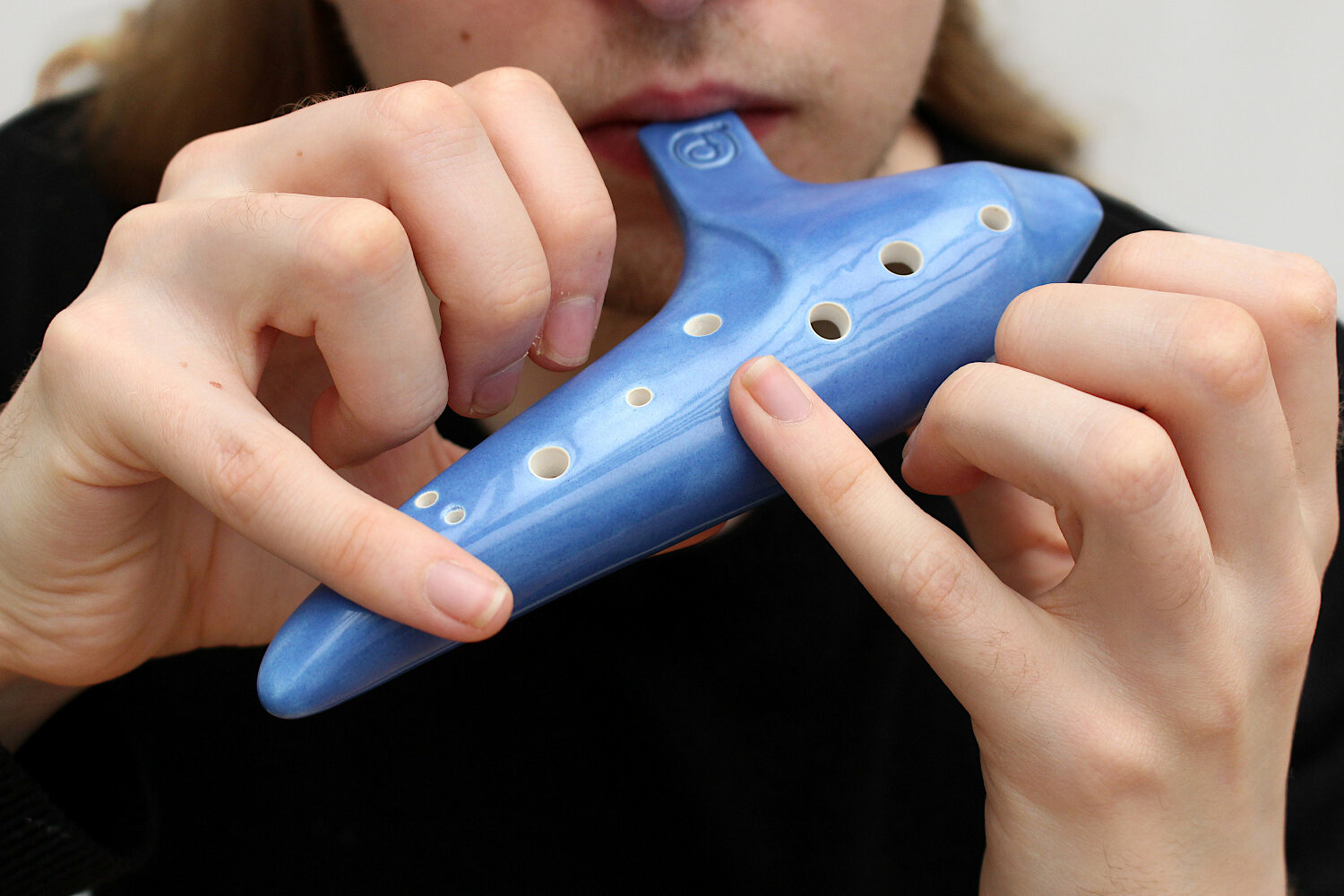Avoiding excessive finger movement on the ocarina
When you first start playing the ocarina, you may find that your instinct is to lift your fingers really high, like this:

You could also find yourself curling your fingers back when you lift them.

Doing either of these things is problematic as it leaves your fingers a long way from the instrument, and:
- It may make the ocarina feel unstable, like you may drop it.
- It increases the chance that you will mis-cover a hole.
- It will slow you down when you try to play faster music, as the farther you move your fingers, the faster you have to move them.
It's best to always lift your fingers straight, without curling them back, to a resting position about two centimetres above the instrument.


Practising controlled finger movement
Slow and conscious practice is how you learn to control your finger movements:
- Very slowly lift the finger to the desired height.
- Replace the finger, making sure to cover the hole.
Just work through this for each finger, practising in a slow and deliberate way. After a few days, it becomes automatic as the practice trains your subconscious mind (muscle memory).
You may find it useful to use a mirror to clearly see what you are doing. Additionally, if you practise with one hand at a time, you can use the other hand to block excess movement.


Determining how high
Ocarinas are quite sensitive to shading, and if you have your fingers too close to the holes, the ocarina is going to play flat. It is possible for the slight shading of multiple fingers to flatten the high notes enough to make them squeak.
Usually, lifting your fingers about two centimetres is enough, though it is a good idea to check using a chromatic tuner:
- Play a note in the middle of the range; G is a good choice on an alto C ocarina.
- While blowing this note steadily, slowly lower the finger for the note below (e.g. F natural) toward its hole.
- Take note of when it starts to alter the pitch.
Larger holes will start to be affected sooner, and will require you to move your finger further. Just try to find a sensible average that works for your ocarina.
Avoiding the 'finger fan'
Another thing you may encounter is the 'finger fan'. As you lift sequential fingers, the previously lifted ones on the same hand lift higher and higher, like a 'fan'.

Fanning your fingers is problematic because some rest closer to the ocarina than others. If you need to place two or more fingers at the same time, one will land before the other, and you'll get an unwanted 'blip'.
It is best to lift fingers to a consistent height, and to be able to move one finger without moving the adjacent ones. To start to develop this skill, give this a try:
- Place your hands and fingers flat on a table.
- Lift and replace each finger from left to right, then right to left.
- Only one finger should move at a time.
And then:
- Hold your hands above the table with your fingers straight.
- Tap one finger at a time, without moving the other fingers.
- If you find that a finger wants to move that should not, counter the movement by thinking about moving that finger in the opposite direction.
Then try playing your ocarina's native major scale, lifting fingers sequentially, so that only one finger is moving and the fingers that are already lifted remain in the same position. If you work with one hand at a time, your other hand may be used to physically block unwanted movement, as discussed previously.
Closing notes
It can take a few days to a few weeks for this to become your normal habit, and during this time you may find that fingers misbehave while you are playing. It's not a problem, and it goes away by itself in time.
